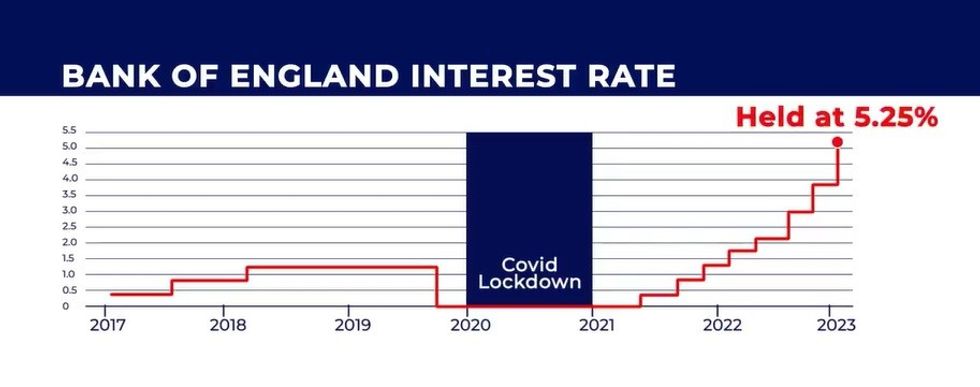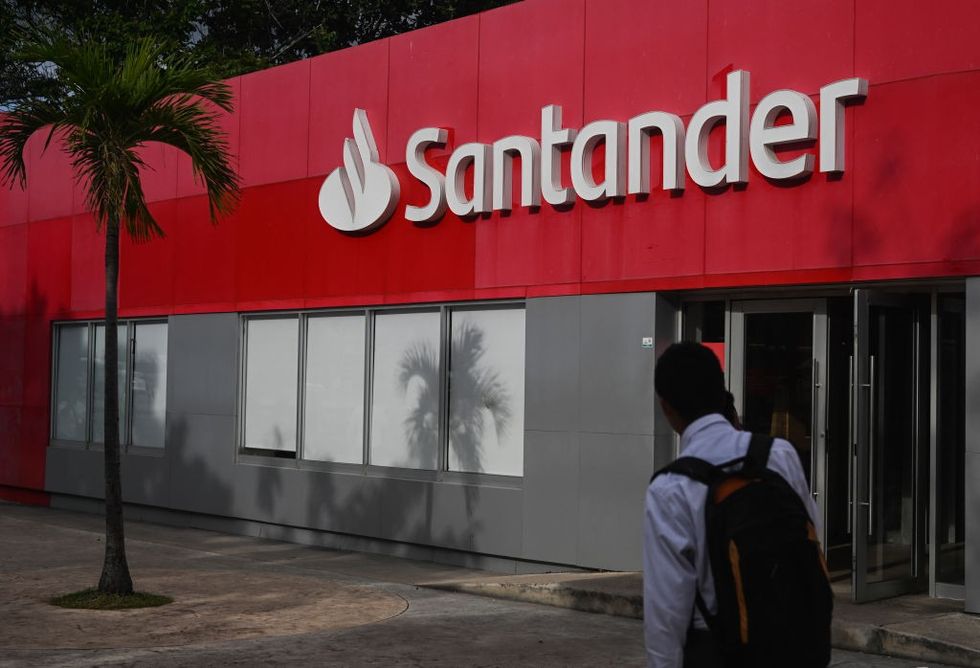Santander has confirmed more cuts to mortgage rates
PA
Mortgage repayments have remained high due to the Bank of England's decision to raise interest rates but Santander is among the lenders making cuts
Don't Miss
Most Read
Trending on GB News
Santander has announced a wave of cuts to interest rates across its line of mortgage products in a massive win for homeowners and homebuyers.
The high street lender is slashing rates to selected fixed rates across its purchase, remortgage, buy-to-let and new build ranges.
On top of this, Santander has announced the launch a range of new large loan two-year tracker products, up to 75 per cent loan-to-value (LTV.)
Homeowners negotiating a new deal and homebuyers hoping to get on the property ladder have struggled in recent years amid a challenging housing market.
Thanks to the Bank of England's decision to raise the country's base rate, and hold it, at 5.25 per cent, mortgage repayments have risen in recent years.
Analysts are pricing in cut to rates sometime later this year with lenders such as Santander taking action ahead of this.
Do you have a money story you’d like to share? Get in touch by emailing money@gbnews.uk.
 The Bank of England base rate has held interest rates at a 16-year high since it was hiked to 5.25 per cent last August GB NEWS
The Bank of England base rate has held interest rates at a 16-year high since it was hiked to 5.25 per cent last August GB NEWSHere is a full list of the mortgage rate cuts and changes being implemented by Santander as of today (June 11):
- New large loan 2 year tracker range for purchase and remortgage clients. This includes a 60 per cent LTV two year tracker rate at 6.04 per cent with a £1,999 product fee for loans up to £5 million and a 75 per cent LTV two year tracker rate at 6.24 per cent with a £1,999 product fee for loans up to £3million.
- Select residential fixed rates are being cut by between 0.02 per cent and 0.14 per cent for purchases and remortgages, including a 60 per cent LTV 5 year fixed rate at 4.28 per cent for loans up to £3million for purchases.
- Selected Buy to Let fixed rates are being reduced by 0.14 per cent for purchases.
As well as these cuts, Santander has confirmed changes to product transfer when someone changes their current mortgage product to a new one with the same bank or building society.
For clients who want to change or cancel their new mortgage deal, they can pick a new product in the online transfer service and a new offer will be issued if they have not accepted their initial offer yet.
If they have accepted a new deal, customers can change to a new deal or cancel one that is booked for them
However, they have to do this at least 14 days before their new deals start.
According to research carried out by Moneyfactscompare, the average two-year fixed mortgage rates fluctuated by less than one per cent over a seven year period between April 2015 and April 2022, with five-year fixed deals also being steady over this period.
Furthermore, the average two-year fixed deal was under two per cent in July 2022 but has since tripled to 6.84 per cent in just three years following the market's response to the 2022 mini-Budget.
LATEST DEVELOPMENTS:

The highs street lender is making changes to its mortgage range
GETTYJames Hyde, a spokesperson at Moneyfactscompare, said: “Mortgage rates may have fallen significantly since peaking last year, but they remain much higher than they’ve typically been over the past 14 years.
“For example, those who are coming to the end of a five-year fix in June 2024 can expect to see their interest payments almost double, with average rates rising from 2.85 per cent then to 5.5 per cent now.
"If they wish to fix for a shorter term to keep their future options open, rates will be even higher: the average two-year is currently close to six per cent.
“Savers are at least seeing real-terms profit on their deposits right now, with easy access accounts having paid an average of less than one per cent since May 2010 - despite the average inflation figure over the same time period being over three per cent."








